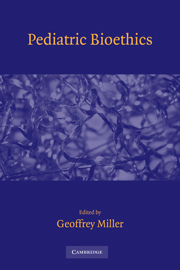8 - Newborn Screening
Published online by Cambridge University Press: 07 May 2010
Summary
INTRODUCTION
Today, newborn screening is a rite of passage. The practice began in the United States in 1957 when California initiated screening for phenylketonuria (PKU) by testing urine in infants' diapers for phenylpyruvic acid. Objections to urine sample collection were raised by both parents and physicians, and testing was not routinely performed. In the 1960s, the ability to measure phenylalanine from blood spots collected on filter paper (Guthrie cards) made large-scale newborn screening possible. In 2008, that small amount of dried blood was collected from virtually every infant born in the United States and tested for a number of conditions. But there is wide state variability in (1) the number of conditions; (2) how testing is done (different methodologies and different cutoff points leading to different rates of false positives and false negatives); (3) when testing is done (before discharge and whether a second screen is offered or mandated); (4) what follow-up screening services are offered by the states (many of the conditions require special formulas that are expensive; only some are state-subsidized); and (5) whether the cards are stored and are made accessible to researchers.
A major technological revolution in newborn screening is the use of tandem mass spectrometry (MS/MS). Mass spectrometry was developed more than 100 years ago, but the use of mass spectrometers in series (tandem) was not applied to newborn screening until the 1990s. MS/MS allows newborns to be screened for a large number of inherited metabolic conditions simultaneously at an incrementally small price for each additional condition included.
Keywords
- Type
- Chapter
- Information
- Pediatric Bioethics , pp. 111 - 124Publisher: Cambridge University PressPrint publication year: 2009

